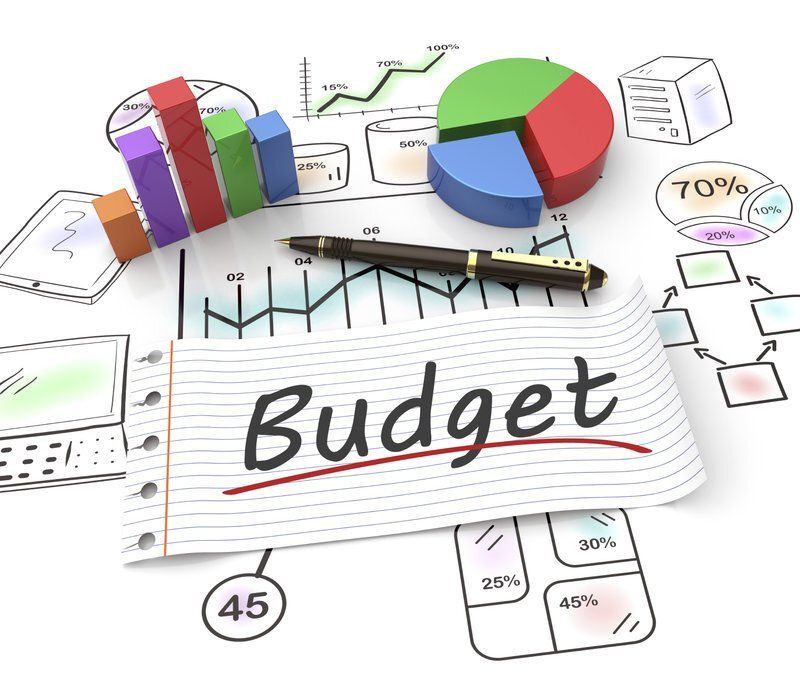3 reasons your business needs a budget now

For many, the word ‘budget’ is about as appealing as the word ‘diet’.
It seems to imply what you will go without, rather than what you will achieve.
To a successful business owner, however, the word ‘budget’ has a very different meaning.
It’s more like a map than a diet. It’s an outline of where you want to take the business, and what you need to achieve to get there.
Running a business without a budget is like a ship’s captain setting off on a voyage without a map. Sounds ridiculous, doesn’t it. Who would do that?
Yet this is, figuratively speaking, what many business owners do.
Successful business owners, on the other hand, not only set clear targets and budgets each year, they monitor them closely each month, even each week, and adjust them as they go throughout the year.
Here are 3 compelling reasons your business needs a budget, now:
One:
If you don’t know where you’re going, how do you know you’re not already there?
If you’re not satisfied with how your business is performing, unless you set clear goals for where you want to take it, it’s probably as good as it is ever going to get. At best, it will just meander along, subject to the whims and vagaries of the economy and general market conditions.
The good news is that your business doesn’t need to meander along.
The first step in charting a clear course for growing and developing your business is objectively measuring ‘where it’s at’ right now.
And the numbers do tell a story.
For some, they act as a wake up call. For others, they just confirm the journey’s starting point.
It’s paradoxical that a large part of the value in a business budget is not in the numbers themselves. It’s in the realisation and acceptance of where you are and where you want to be.
The numbers are just the signposts for the journey.
A factual look at the numbers that describe where your business is right now takes away all the subjectivity, opinions and ‘reasons’ (often excuses, disguised as reasons).
This is the naked truth.
In fact, it is like standing on the scales, naked, looking at yourself in a full length mirror. That may or may not be a pretty sight!
For your business, these factual numbers are the sales, the variable costs, the margins, the overheads, and, lastly, the profit. After all your work, this is the reward you’re left with.
Then comes the first of a series of ‘hard questions’...
- Are you happy with that profit?
- Is it worth it? Or are you dissatisfied? Then ...
- What do you want those figures to look like?
Answer those questions, and you’ve just described where you want to be. Congratulations! You have charted your course, which is the first step to ensuring your success.
Two: What’s more important to treat? Symptoms or causes?
As you well know, sales don’t just happen. Costs don’t drop just because you want them to. Sales and costs are a result of other underlying factors. Put another way, they are symptoms of causes.
The business budgeting process quantifies the symptoms, and by asking a series of ‘What leads to this number?’ questions, it also identifies the underlying causes.
For example, underlying factors contributing to a sales (revenue) figure could include:
- the number of calls made,
- the number of customers walking through the door,
- the percentage of conversions of enquiries or walk-ins to sales, the dollar value of the average transaction, or simply
- where your marketing is targeted.
These are all called drivers. The sales figures are simply a result of these drivers. Costs are no different.
For example, the rent paid may be a result of the storage you need for your stock levels. Wages costs may be blowing out as a result of overtime paid but underlying that may be inefficient staff. Or a lack of clear processes. Or both.
So in reality what came first was not the sale or the cost, but their underlying drivers. The budgeting process forces you to name and to quantify these underlying drivers.
That’s one of the most valuable aspects of preparing your budget. Not the budget itself, per se, but identifying your business’ drivers.
Why?
Because then you can focus on improving them.
That’s what will produce the improved results in your business. No focusing on last quarter’s figures. That’s history.
It’s more fun to create history. And that is, in essence, what you are doing when you are in your own business. You are captain of your own destiny, and you can steer it in any direction you want.
Note that word ... direction. A key point is to have one.
You will enjoy how effectively the budgeting and planning process will get you crystal clear on your direction.
Three: Budgeting is not about accounting. It’s about being accountable.
Once you are clear on the handful of drivers that creates your business’ results, the next question is…
What are you going to do about it?
Your budget won’t just give you a monthly sales target, for example, it will help you quantify the drivers that will produce the result.
For example, if next month’s sales target is $120,000, that end-result figure is not your focus. Not on a day-to-day basis. Knowing the underlying drivers, your focus will instead become, for example:
25 calls per day (Driver No.1)
At 80% conversion rate (Driver No.2), with
Each customer buying an average of $300 worth of products (Driver No. 3).
Now you and your staff have a clear focus and are 100% accountable.
That’s good for them, and good for you and your business.
People in a business want a clear scoreboard and a ‘game to play’ so they know whether or not they are winning. Research has found that a lack of measurement in a job is demotivating to a staff member. Patrick Lencioni’s book ‘3 Signs of a Miserable Job’ gives some great examples of this.
Knowing these drivers, and quantifying a target for each you can then ask questions like:
- Have the 25 calls been made today?
- If not, why not? Is the target realistic?
- Does the team need training?
- Do they need better telephone equipment or dialing software?
- Or just more focus?
- Or guidance on what their task priorities should be?
- Or a combination of these?
- Are we being effective and converting 80% of the calls?
- Again, if not, why not?
You can then decide to improve skills, or systems, or attitude, or all three!
As you can see, the power of the budget is in the process of preparing it, and then the budget itself is a tool to hold you accountable to the measurable indicators you’ve chosen.
An added layer of accountability is... us.
We work with a number of clients where, on either a monthly or quarterly basis, we act as a sounding board and independent party to ask you the hard questions about the drivers and the results. This focuses your mind, allows you to form a clear Action Plan to improve results, and then increases your chances of success because you know you need to report in to us next time.
It’s a powerful process that you’ll enjoy due to the focus it creates and, in turn, the results that focus achieves in your business.
To take more control of your business and its performance, get in touch to make a time to come in and see us. Depending on the size of your business, we might work out that a quarterly process might work best (and be the most feasible, cost-wise), or your business might be at a point where monthly or even weekly guidance would be ideal.
Either way, we’ll outline your options and your costs so you know precisely what’s involved.
We look forward to helping you chart your course, helping to get a clear direction, and then keeping you and your business on course.
After all, you won’t end up at the ideal destination by drifting.
Need help with your accounting?

If your business interacts with the public in any way (from welcoming customers into your shop to visiting client sites) then public liability insurance isn’t just “nice to have.” It’s essential protection. Whether you’re a sole trader, a café owner, or running a construction company, public liability insurance helps safeguard your business against unexpected (and often costly) accidents. What Is public liability insurance? Public liability insurance covers your business if a member of the public suffers injury, death, or property damage as a result of your business activities. In simple terms, it’s there to protect you financially if something goes wrong—such as a customer slipping in your store, a tradie damaging a client’s property, or a product you sell causing harm. Without it, you could be personally liable for significant compensation and legal costs. What does it cover? A typical policy covers: Injury or death to a third party caused by your business operations. Damage to property belonging to someone else. Compensation and legal costs you’re ordered to pay following a covered claim. For example, if a customer trips over a cable in your office or a carpenter cracks a client’s TV while working onsite, public liability insurance steps in to cover the costs. What isn’t covered? While every policy is different, public liability insurance usually won’t cover: Damage involving vehicles. Defective work. Breach of professional duty or negligence in advice (that’s covered by professional indemnity insurance). Defamation or advertising liability. Understanding these exclusions helps you choose the right combination of cover for your business. Who needs public liability insurance? If your business has any level of public interaction, you likely need it. Common examples include: Customer or supplier visits: If anyone comes to your premises or you work on theirs. Public events: Markets, expos, and pop-ups. Retail, trade, and construction: High public contact increases your risk. Leased premises: Many shopping centres and landlords require proof of cover. Contractor or license requirements: Many trade licenses (like electricians and plumbers) require it to operate. Even if it’s not legally required, most Australian businesses choose to have public liability insurance for peace of mind. How much cover do you need? The level of cover depends on your industry, business size, and risk exposure. Most businesses opt for between $5 million and $20 million. It’s worth reviewing your policy regularly, especially if your operations expand or you start working in new environments. Is it compulsory in Australia? Public liability insurance isn’t legally mandatory for all businesses, but some industries and licences make it a condition of operation. For example, in Queensland, electrical contractors must hold a minimum of $5 million in public and product liability cover. Similarly, councils or venue owners may require proof of insurance before approving an event or leasing a space. Don’t risk a law suit. Being sued for negligence can be financially devastating. Even a minor incident can mean you lose hundreds of thousands—not to mention the impact on your brand and business reputation. Public liability insurance ensures your business can keep operating, even when the unexpected happens. If you’re unsure whether your current cover is adequate, our team at Ascent Accountants can help you review your business risks and recommend the right level of protection for your situation. Contact us today to learn more.

It’s very common for retirement priorities to shift over time. But for some, the change arrives with a jolt. You may spend years—even decades—planning exactly what your post-work life will look like. While life can throw a curveball into your plans at any stage, the closer you get to retirement, the more unsettling the disruption can be. Whether it’s family breakdowns, the death of a loved one, an inheritance received, or unexpected expenses, you'll face a different personal and financial landscape. One that no longer matches the retirement you envisioned. Adjusting your working life. When a major life change hits, the most important rule is: don't rush anything. While you're reshaping your future and contemplating big moves, avoid making any rash decisions that are irreversible. The event may alter the required length of your working life or your willingness to continue working: Health issues could force you to retire earlier than planned A substantial inheritance might enable a more enjoyable, earlier exit from work. Conversely, a divorce late in life, particularly for someone with high spending habits, might necessitate staying chained to a desk longer. The separation may leave you with an unexpected mortgage or simply drain your finances through the legal process, creating difficulties. Make a basic plan. Take the time to sit down and rationally think through what your new retirement might involve. If retirement is still five to 10 years away, that's a good timeframe to start contemplating your next steps. The most critical step is to determine how much money you will need to spend. While most people worry about whether they "have enough money," the key question is almost always, "How much do I need to spend in retirement?". Consider this example: If you retire with $1 million and your annual spending requirement is $50,000, you're likely secure. However, if you have $1 million but need to spend $150,000 per year, you have a problem. You'll need to either dramatically increase your savings or significantly reduce your spending expectations. If you are struggling with these figures or want a professional opinion, see a financial adviser ( we can direct you to one ). Paying for a few hours of their time will help you consider things you hadn't thought about. A change of pace. Remember, retiring from your main career does not mean leaving the workforce for good. You have options: Moving part-time in your current job for a few years, using your extra days for hobbies. Taking on volunteer work. Leaving a stressful executive role for paid work you actually enjoy. Hopefully, your surprises on the path to retirement are positive ones. If they are not, don't panic. Stay calm and seek advice. We can help. Early advice and planning can make a real difference in managing your retirement well—understanding the tax implications is a huge part of that. Don’t wait — let us help you !

If you're living and working in Australia on a visa, you may be required to lodge a tax return with the Australian Taxation Office (ATO). Australia's tax system is complex—even more so if you're a visa holder. We specialise in helping visa holders understand and manage tax obligations with clarity, compliance, and confidence. With years of experience in this niche area, our dedicated team of tax professionals is here to make tax time stress-free. Do visa holders need to lodge a tax return? If you earn income in Australia, you're likely required to lodge a tax return. This applies even if you're on a temporary or bridging visa. Common visa types that often require a tax return include: Working Holiday Visa (subclass 417 or 462) Student Visa (subclass 500) Temporary Skill Shortage Visa (subclass 482) Graduate Visa (subclass 485) Partner Visa (subclass 820/801 or 309/100) If you earn more than the tax-free threshold (currently $18,200), you must lodge a return. Some visa holders, however, don’t qualify for this threshold—more on that below. Australian Tax Residency Test explained. When it comes to lodging your tax return, your tax residency status makes a huge difference. Even if you're on a temporary visa, you could still be a resident for tax purposes. This affects how much tax you pay, what deductions you're eligible for, and whether you can claim the tax-free threshold. 1. The Resides Test (Main Test) This is the primary test. You’re likely a resident if: You live in one place and have regular routines (like renting a place, going to work or uni) You’re part of the local community (bank account, phone, gym, etc.) You stay in Australia for a continuous period of 6 months or more You intend to stay long term—even if your visa is temporary 2. The Domicile Test You may be a resident if your domicile (legal home) is in Australia, unless you can prove your permanent place of abode is overseas. This usually applies to: Australian citizens or PRs working overseas temporarily People who still maintain strong ties to Australia Note: Most temporary visa holders don’t pass this test unless they’ve been in Australia long-term. 3. The 183-Day Test. If you’re physically in Australia for 183 days or more in a financial year (doesn’t need to be consecutive), you may be a resident—unless your usual place of abode is clearly overseas and you don’t intend to live here. You’re likely a resident if: You stay for 6 months or more You rent long-term accommodation You’re working or studying with the intention to remain for an extended time Common visa types & how tax applies. 1. Student Visa (Subclass 500) Likely considered a tax resident if you stay over 6 months Can claim the tax-free threshold ($18,200) Can deduct eligible expenses (like textbooks, computers for study if working in a related field) 2. Working Holiday Visa (Subclass 417 or 462) Taxed at a flat rate of 15% on income up to $45,000 Must lodge a return if you earn any income Generally, not eligible for the tax-free threshold Superannuation can be claimed back when leaving Australia (through DASP) 3. Temporary Skill Shortage (TSS) Visa (Subclass 482) Often considered a tax resident, especially if you're working full time and have relocated Must lodge a return and may be eligible for tax offsets Can claim work-related deductions and rental expenses (if conditions apply) 4. Partner Visa (Subclass 820/801 or 309/100) Usually treated as a resident for tax purposes Same obligations and entitlements as an Australian citizen Tax returns may support future PR or citizenship applications Key differences for visa holders. 1. Tax Residency Status Your tax residency is not the same as your immigration residency. You could be a temporary visa holder and still be considered an Australian resident for tax purposes. If you're a resident for tax purposes, you may be eligible for the tax-free threshold and lower tax rates. If you're a non-resident, you’ll pay tax on every dollar earned (no tax-free threshold) and possibly at higher rates. Factors like how long you’ve been in Australia, your living arrangements, and whether you plan to stay long-term affect your tax residency status. The ATO provides a residency test to help determine your status. 2. Working Holiday Makers If you hold a working holiday visa, you're taxed at a special flat rate (15% on income up to $45,000 as of 2024-25), regardless of your residency status. You're still required to lodge a return if you’ve worked. 3. Access to Tax Offsets and Benefits Only Australian tax residents can access certain tax offsets, such as the low-income tax offset. You may also qualify for superannuation contributions, but you'll need to apply for a Departing Australia Superannuation Payment (DASP) when leaving the country permanently. What are the common mistakes to avoid? We see four common mistakes: Assuming you don’t need to lodge because you're a student or on a short-term visa Not declaring all income (including freelance or cash jobs) Using the wrong tax residency status Forgetting to lodge a return when leaving Australia Let us take care of your tax return. Whether you're a student, skilled worker, working holiday maker, or about to leave Australia permanently, getting your tax return right is crucial. This is a niche area Ascent Accountants specialises in. We understand the unique situations that come with different visas—and we make sure you claim every dollar you’re entitled to. Contact us today to get started.

Bringing clarity to concealed sales prices. Scrolling through property listings and seeing phrases like 'offers from', 'expressions of interest', 'all offers considered', or simply 'contact agent' instead of a clear price can be frustrating for buyers. This lack of transparency makes it difficult to figure out what a seller is truly expecting for a property. In fact, the frustration at properties advertised with no price at all is consistent feedback clients give to agents. Buyers often report frustration after calling agents and not being given any guidelines on where the property sits on a price scale. The absence of price information can impact user engagement, with industry feedback suggesting it can significantly influence how users interact with property websites. Clear, visible pricing may enhance user trust and interest. Strategic steps for buyers. How to overcome the problem when agents don't give a price guide. Navigating a property purchase without a price guide is challenging, but buyers can take strategic steps to reduce uncertainty and strengthen their buying position. Research comparable sales: Understanding market trends and researching comparable sales in the area is crucial for setting realistic expectations. While median values are widely referenced, they don't always accurately reflect individual property values, so look at recent sales of similar properties for a clearer picture. Know your financials: Have a clear understanding of your risk profile and financial position. Know your borrowing capacity and secure a loan pre-approval. This streamlines the buying process and makes your offer more appealing to sellers in a competitive market. Use online tools: Experimenting with the minimum-to-maximum price range feature online can assist in providing a general price range. The limitations of desktop valuations. While desktop valuations can be handy, be careful not to overstate their accuracy due to certain variables. Desktop valuations are just averages based on an area's lot size, house size, nearby sales, number of bedrooms, and bathrooms. They may not accurately account for homes that are unique, have views, or don't fit the suburb's prescribed pattern. Furthermore, distinct features are ignored. A significant difference between properties may be that one has been totally upgraded and renovated, with sellers spending hundreds of thousands, versus a property in original condition. This difference is often not taken into account by automated valuations. We’re here to help. Buying a home is a financial and an emotional decision. If you’re buying, do your homework on comparable sales and understand the tax implications with Ascent Accountants . You can also consult with Ascent Property Co. and be matched with a home that suits your needs.




